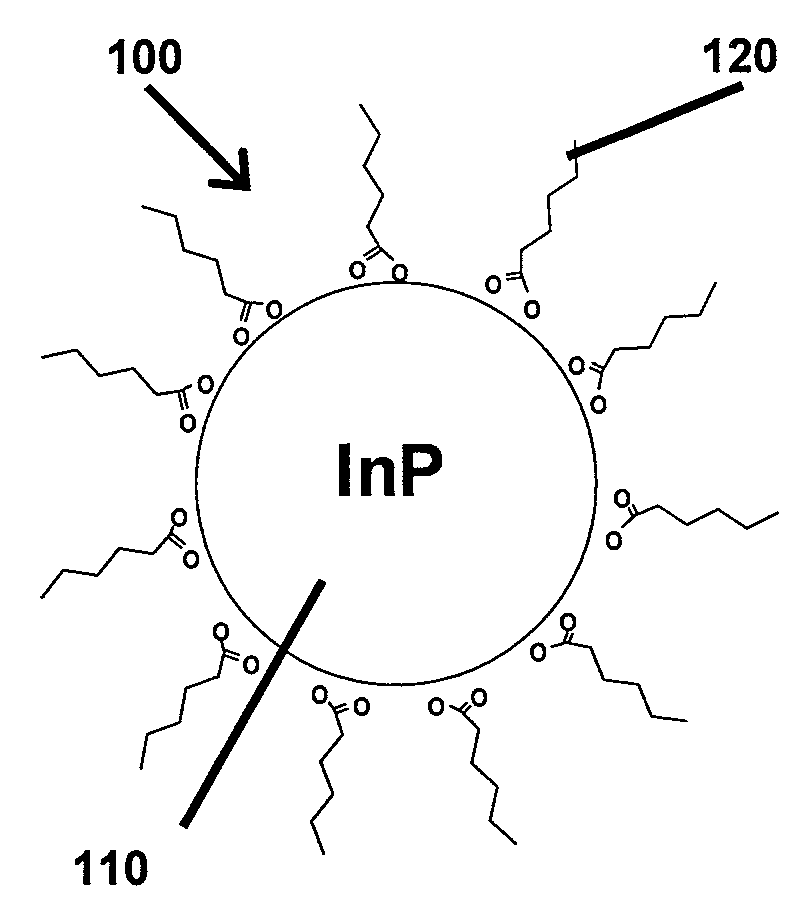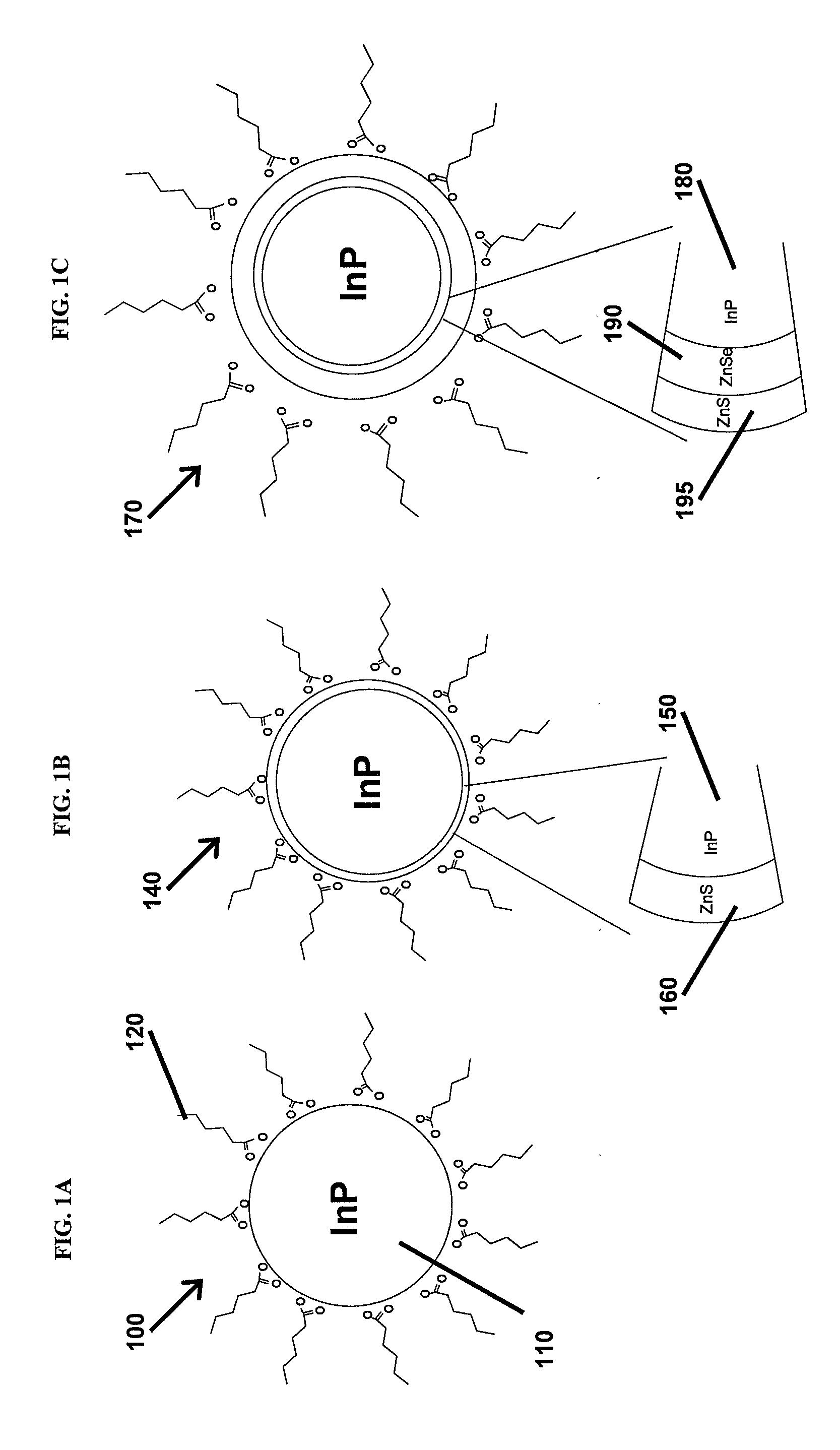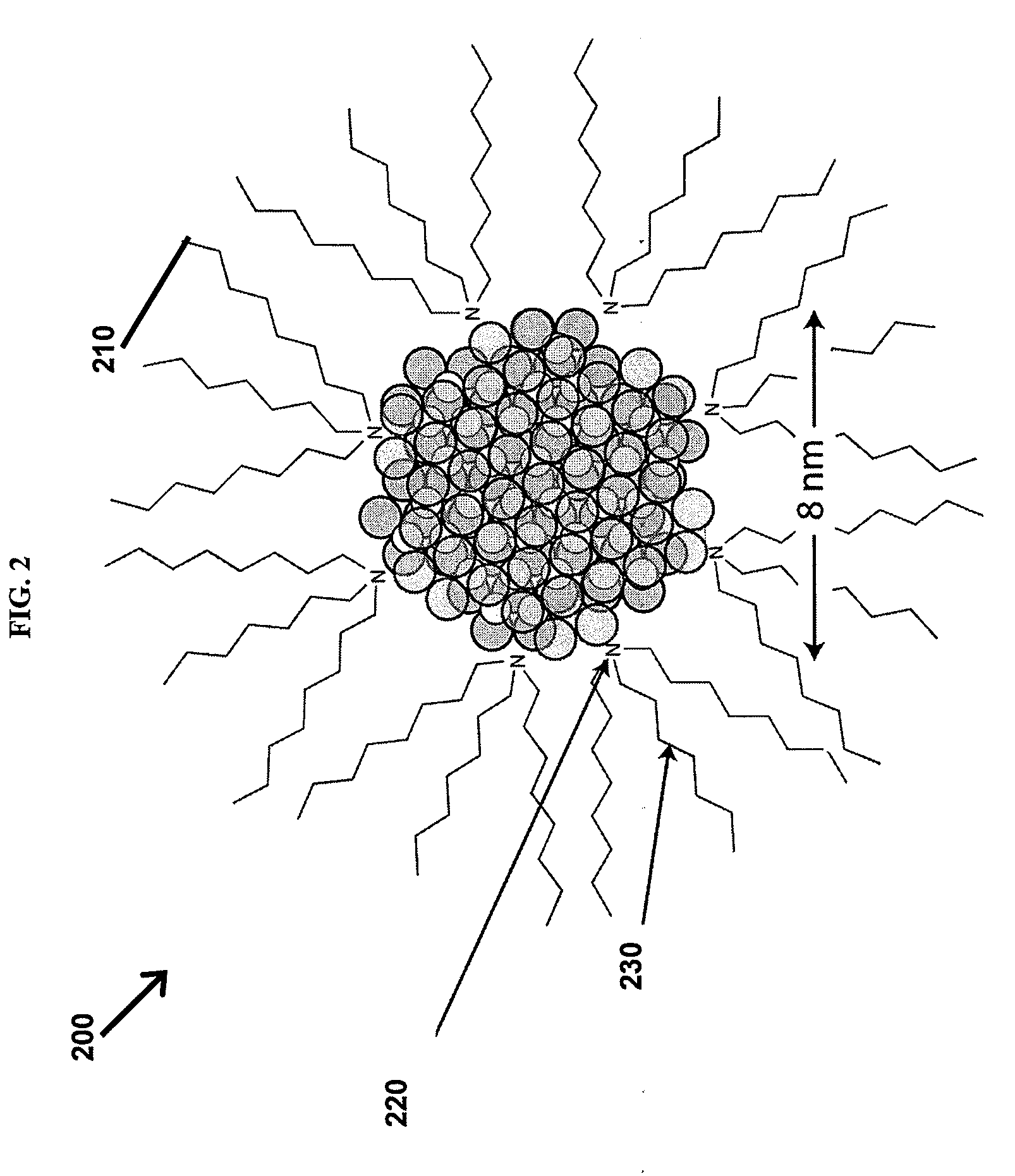Preparation of Nanoparticle Materials
a technology of nanoparticles and nanoparticles, applied in the field of nanoparticles preparation, can solve problems such as particle agglomeration, and achieve the effect of easy scaling up to production volumes
- Summary
- Abstract
- Description
- Claims
- Application Information
AI Technical Summary
Benefits of technology
Problems solved by technology
Method used
Image
Examples
examples
[0328]All syntheses and manipulations were carried out under a dry oxygen-free argon or nitrogen atmosphere using standard Schlenk and glove box techniques. All solvents were analytical grade and distilled from appropriate drying agents prior to use (Na / K-benzophenone for THF, Et2O, toluene, hexanes, pentane; magnesium for methanol and ethanol and calcium hydride for acetone). All chemicals were analytical grade.
[0329]Elemental analyses were performed on a CARLO ERBA CHNS-O EA1108
[0330]Elemental Analyzer. UV-vis absorption spectra were measured on a Thermospectronic Heλios β Spectrophotometer. PL spectra were measured with a Fluorolog-3 (FL3-22) photospectrometer with an excitation wavelength of 380 nm. Spectra were obtained with the slits set at 2 nm and an integration time of 1 second, or measured in situ using an Ocean Optics 2000 USB probe. Powder X-Ray diffraction (PXRD) measurements were performed on a Bruker AXS D8 diffractometer using monochromatic Cu—Kα radiation with the s...
PUM
| Property | Measurement | Unit |
|---|---|---|
| quantum efficiency | aaaaa | aaaaa |
| temperatures | aaaaa | aaaaa |
| temperatures | aaaaa | aaaaa |
Abstract
Description
Claims
Application Information
 Login to View More
Login to View More - R&D
- Intellectual Property
- Life Sciences
- Materials
- Tech Scout
- Unparalleled Data Quality
- Higher Quality Content
- 60% Fewer Hallucinations
Browse by: Latest US Patents, China's latest patents, Technical Efficacy Thesaurus, Application Domain, Technology Topic, Popular Technical Reports.
© 2025 PatSnap. All rights reserved.Legal|Privacy policy|Modern Slavery Act Transparency Statement|Sitemap|About US| Contact US: help@patsnap.com



